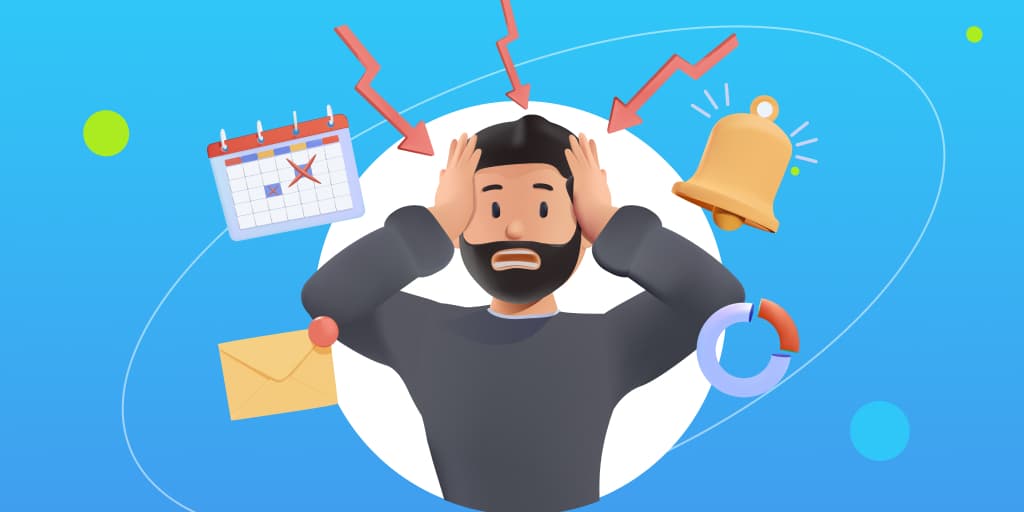Search Engine Optimization—or SEO—is the reason some businesses appear at the top of Google when customers search for their services, while others remain buried on page two where virtually no one looks. If you've ever wondered why your competitor shows up first when someone searches for what you both offer, the answer is almost certainly SEO.
SEO isn't magic, and it's not about gaming the system. It's about making your website and online presence so valuable and relevant that search engines naturally want to show it to people looking for your services. Understanding SEO is no longer optional for small businesses—it's essential for survival in today's digital marketplace.
The businesses dominating Google search results aren't necessarily the biggest or oldest—they're the ones that understand how search engines work and have optimized their online presence accordingly. The good news? SEO fundamentals are learnable, and small businesses often have advantages over larger competitors when implementing them effectively.
SEO Simplified: What Search Engines Actually Want
At its core, SEO is about understanding what search engines are trying to accomplish and aligning your website with those goals. Google's mission is simple: provide users with the most helpful, relevant, and trustworthy results for their search queries.
Search engines use complex algorithms to evaluate websites and determine which ones deserve top rankings. These algorithms consider hundreds of factors, but they all revolve around one central question: "Which website will best serve the person making this search?"
This user-first approach means effective SEO isn't about tricking search engines—it's about creating genuinely valuable content and experiences that serve your potential customers better than your competitors do.
The Three Pillars of SEO
SEO consists of three interconnected elements that work together to improve your search visibility. Understanding these pillars helps you approach SEO strategically rather than randomly implementing tactics.
Technical SEO: Your Website's Foundation
Technical SEO ensures search engines can properly access, crawl, and understand your website. Think of it as the foundation of a house—everything else you build depends on having this foundation solid.
Key technical elements include website speed, mobile responsiveness, secure connections (HTTPS), and proper site structure. If search engines can't easily access and understand your website, even the best content won't help your rankings.
Most small businesses can address technical SEO basics without advanced technical knowledge, though complex issues may require professional help.
On-Page SEO: Content That Converts
On-page SEO involves optimizing individual pages to rank for specific keywords while providing value to visitors. This includes strategic keyword placement, compelling titles and descriptions, and content that thoroughly addresses user intent.
Effective on-page SEO goes beyond keyword stuffing—it's about creating comprehensive, helpful content that answers customer questions and guides them toward solutions.
Off-Page SEO: Building Authority and Trust
Off-page SEO focuses on signals from other websites that indicate your site is trustworthy and authoritative. The most important off-page factor is backlinks—other websites linking to yours as a valuable resource.
Quality backlinks act like votes of confidence, telling search engines that other sites consider your content valuable enough to reference. However, not all backlinks are equal—links from authoritative, relevant sites carry much more weight than links from low-quality directories.
How Search Engines Actually Work
Understanding the basic process search engines use to deliver results helps you optimize more effectively. Search engines follow a three-step process: crawling, indexing, and ranking.
Crawling: Discovery Phase
Search engines use automated programs called crawlers or spiders to discover and visit web pages. These crawlers follow links from page to page, discovering new content and checking for updates to existing content.
If your website has technical issues that prevent crawling, search engines can't find your content to include in search results. This is why technical SEO forms the foundation of any effective strategy.
Indexing: Understanding Phase
After crawling your pages, search engines analyze and store information about your content in their index—essentially a massive database of web pages. During indexing, search engines try to understand what each page is about and how it relates to potential search queries.
Proper use of headings, clear content structure, and relevant keywords help search engines understand your content's purpose and context.
Ranking: Relevance and Authority Assessment
When someone performs a search, search engines query their index to find the most relevant pages, then rank them based on relevance, authority, and user experience factors.
This ranking process happens in milliseconds, comparing millions of pages to determine which ones best match the search query and deserve top positions.
Keywords: The Language of Search
Keywords are the bridge between what people search for and the content you create. Understanding keyword research and strategy is fundamental to SEO success.
Understanding Search Intent
Not all keywords are created equal. Someone searching for "web design" might be looking for inspiration, trying to learn design principles, or ready to hire a designer. Understanding the intent behind different searches helps you create content that matches what searchers actually want.
Informational queries seek knowledge: "how to improve website speed" Navigational queries look for specific sites: "Facebook login" Commercial queries research before buying: "best web design companies" Transactional queries indicate buying intent: "hire web designer"
Long-Tail vs. Short-Tail Keywords
Short-tail keywords are broad terms with high search volume but intense competition. "Web design" is a short-tail keyword that's extremely difficult to rank for.
Long-tail keywords are more specific phrases with lower search volume but less competition and higher conversion rates. "Affordable web design for small restaurants" is much easier to rank for and attracts more qualified prospects.
Small businesses often find more success targeting multiple long-tail keywords rather than fighting for impossible short-tail rankings.
Keyword Research Process
Start by brainstorming terms your customers might use to find your services. Use tools like Google's Keyword Planner, Ubersuggest, or even Google's autocomplete suggestions to discover related terms and search volumes.
Focus on keywords that balance search volume with competition level and commercial intent. A keyword with 100 searches per month that you can realistically rank for is more valuable than one with 10,000 searches that's impossible to rank for.
Content: The Heart of SEO
Content remains the most important ranking factor because it directly serves user needs. Search engines reward websites that provide comprehensive, helpful, and unique content that addresses search intent better than competitors.
Creating Search-Optimized Content
Effective SEO content starts with understanding what your audience needs to know and creating comprehensive resources that address those needs thoroughly. Don't just scratch the surface—provide depth and value that makes your content the best result for relevant searches.
Structure your content with clear headings that help both users and search engines understand your content organization. Use your target keywords naturally throughout the content, but prioritize readability and value over keyword density.
Content Types That Rank Well
Different content formats serve different search intents and can help you capture various types of searches:
How-to guides target informational searches and demonstrate expertise Case studies showcase results and build trust with potential clients Comparison articles help users make decisions while positioning your services Local content captures location-based searches and builds community relevance
Content Freshness and Updates
Search engines favor websites that regularly publish fresh, relevant content. This doesn't mean posting daily blog articles—it means consistently providing value and keeping existing content updated and accurate.
Regular content updates signal to search engines that your website is actively maintained and current, which can positively impact rankings across your entire site.
The Mobile-First Reality
Google now uses mobile-first indexing, meaning it primarily considers the mobile version of your website for ranking purposes. This shift reflects user behavior—most searches now happen on mobile devices.
Mobile SEO goes beyond responsive design. Consider mobile user behavior: they're often multitasking, have limited attention spans, and expect fast loading times. Your mobile experience must be exceptional, not just functional.
Optimize for mobile by ensuring fast loading speeds, easy navigation with large tap targets, and content that's easily consumable on small screens.
Local SEO: Dominating Your Geographic Market
For businesses serving local markets, local SEO can be more impactful than traditional SEO. Local searches often have higher commercial intent—people searching for "plumber near me" are typically ready to hire someone immediately.
Local SEO combines traditional SEO principles with location-specific optimization. This includes optimizing your Google Business Profile, maintaining consistent business information across online directories, and creating location-specific content.
Reviews play a crucial role in local SEO, both as a ranking factor and as a conversion factor for potential customers evaluating their options.
Measuring SEO Success
SEO is a long-term strategy, and success should be measured accordingly. Track metrics that actually impact your business rather than vanity statistics that don't correlate with revenue.
Important SEO Metrics
Organic traffic growth indicates increasing visibility for relevant searches Keyword rankings show progress for target terms, but focus on business-relevant keywords Conversion rates from organic traffic reveal the quality of visitors you're attracting Local visibility for location-based businesses through Google My Business insights
Timeline Expectations
SEO is not a quick fix—it typically takes 3-6 months to see significant results from optimization efforts. This timeline reflects how search engines gradually discover, evaluate, and trust websites.
However, some changes can show faster results. Technical improvements might impact rankings within weeks, while building authority through content and backlinks takes longer to compound.
Common SEO Mistakes to Avoid
Many businesses sabotage their SEO efforts through well-intentioned but misguided tactics. Avoid keyword stuffing—using keywords unnaturally or excessively. This hurts readability and can trigger search engine penalties.
Don't neglect technical basics like site speed and mobile optimization while focusing on content. Technical issues can prevent even the best content from ranking well.
Resist the temptation to buy backlinks or use other "black hat" tactics that promise quick results. These shortcuts often result in penalties that are difficult and time-consuming to recover from.
SEO vs. Paid Advertising: Understanding the Difference
SEO and paid advertising (like Google Ads) serve different purposes and work best when used together rather than as alternatives to each other.
Paid advertising provides immediate visibility and traffic but requires ongoing investment. SEO takes longer to show results but builds long-term value that doesn't disappear when you stop paying.
SEO traffic often converts better than paid traffic because organic results are perceived as more trustworthy. However, paid advertising can provide valuable keyword and conversion data that improves your SEO strategy.
The Business Impact of SEO
Effective SEO does more than improve search rankings—it fundamentally changes how customers discover and perceive your business. Higher search visibility establishes credibility and authority in your industry.
SEO-driven traffic tends to be high-quality because it captures people actively searching for solutions you provide. This targeted traffic often converts at higher rates than other marketing channels.
Long-term, SEO builds valuable business assets in the form of high-ranking content that continues generating leads and customers with minimal ongoing investment.
Getting Started with SEO
Begin your SEO journey by auditing your current website performance using free tools like Google Search Console and Google Analytics. These tools reveal how customers currently find your site and where improvement opportunities exist.
Focus on technical basics first—ensure your website loads quickly, works well on mobile devices, and can be easily crawled by search engines. These foundational elements must be solid before other SEO efforts can be effective.
Start creating valuable content that addresses common customer questions and problems. This content should naturally incorporate relevant keywords while prioritizing user value over search engine manipulation.
SEO as a Long-Term Investment
SEO isn't a one-time project—it's an ongoing investment in your business's digital presence. The competitive landscape constantly evolves, search engines update their algorithms, and customer behavior shifts, requiring continuous adaptation and improvement.
However, businesses that commit to long-term SEO strategies often find it becomes their most cost-effective marketing channel. Unlike paid advertising, SEO efforts compound over time, with each piece of optimized content and earned backlink contributing to overall domain authority.
The businesses dominating search results today started their SEO efforts months or years ago. The best time to start SEO was yesterday—the second-best time is today.
Your customers are searching for your services right now. The question is whether they'll find you or your competitors. SEO ensures you're visible when customers are ready to buy, making it one of the most important investments you can make in your business's future growth.
Ready to improve your search visibility? Understanding these SEO fundamentals is your first step toward attracting more qualified customers through organic search.




